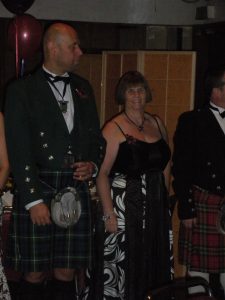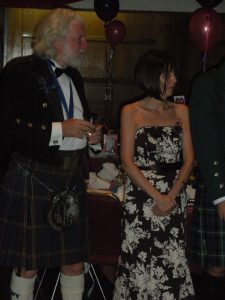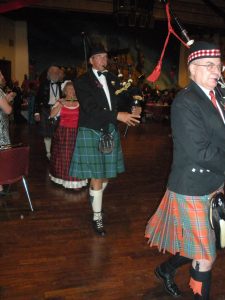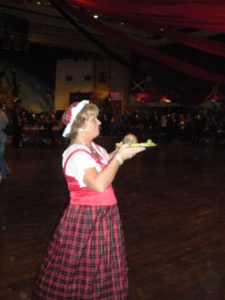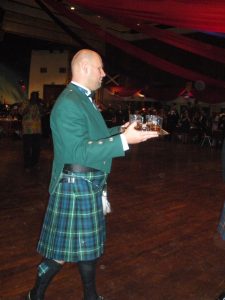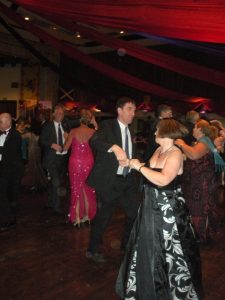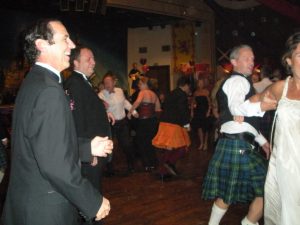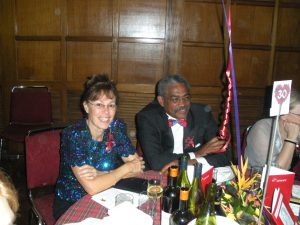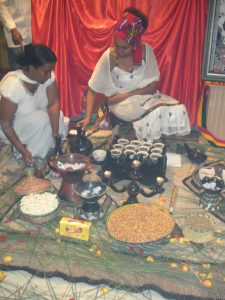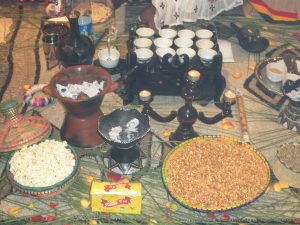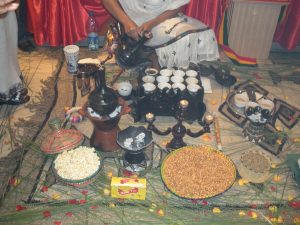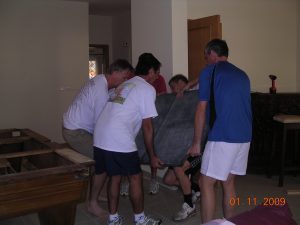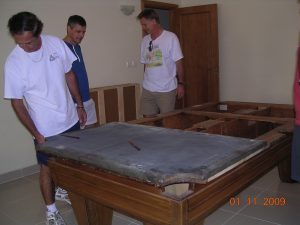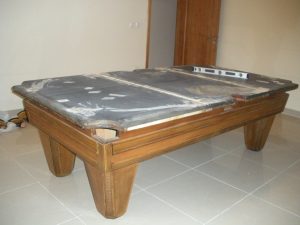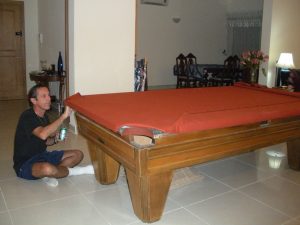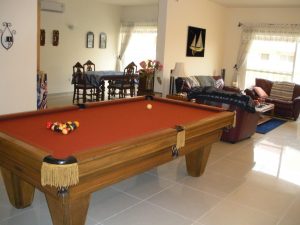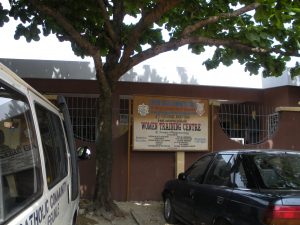
I also had the opportunity to visit another American Women’s Club (AWC) charity – the Carduso Catholic Women’s Center. This charity is also on the mainland in an area called Ajenunle. The Women’s Center is part of a large complex which includes a clinic, a laboratory, a nursery school, a primary school, a high school, the nunnery, the priests’ home, a large catholic church, a public library and the Women’s Center.
The Women’s Center is a vocational training center for women. There are morning and afternoon sessions currently with ~ 300 women enrolled (no woman interested in bettering herself is turned away). They are taught the skills of cooking and baking, housekeeping, sewing and knitting. The Women’s center makes the uniforms for the school children in the primary and secondary school as well as some items for a small shop.
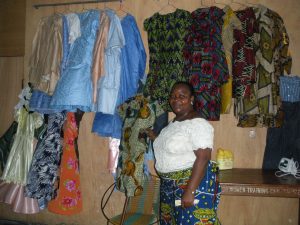
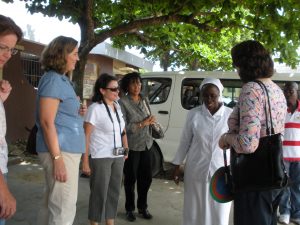
Today when we arrived at the schools, the nursery and primary school were celebrating Cultural Day. Unknownst to us we were the guest of honor!
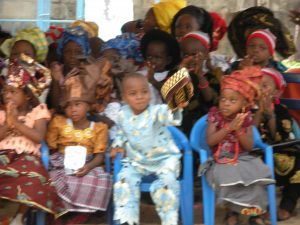
Quite a surprise – however, we had come with gifts in kind including stuffed animals for the nursery students.
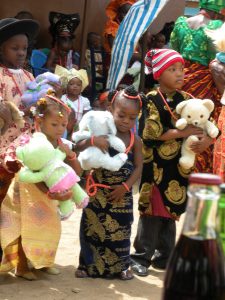
We also had personal care items for the Women’s Center, notebooks for the schools and food for the student’s kitchen. This is a very organized campus run by Sister Bernadette, PhD, who trained at Berkley in California and has been here for many years. Sister has the help of 3 other nuns. We watched the nursery school students sing and dance for us, toured the entire facility and meat by cooked by the women’s center students.
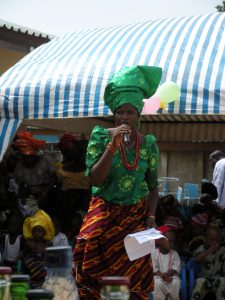 Mrs Adakpo Head Teacher
Mrs Adakpo Head Teacher
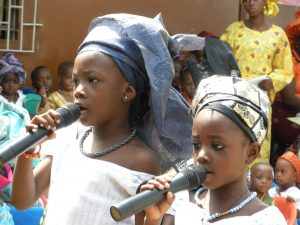 Singing for us
Singing for us
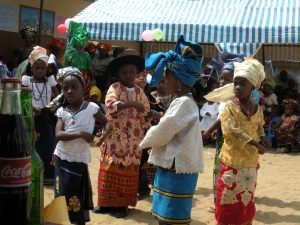 Dancing for us
Dancing for us
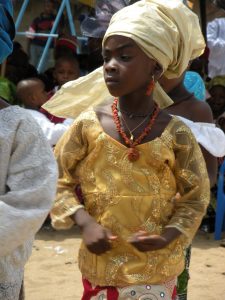
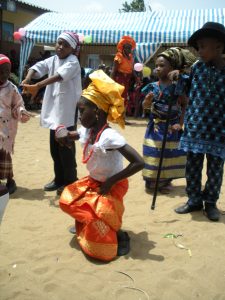
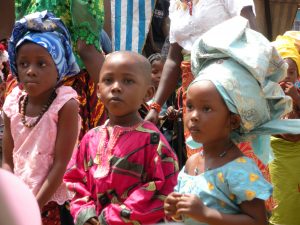
The school is especially proud of their Library, the computer center and the chemistry Lab. This complex while huge was clean and orderly and because of its size is supported by numerous groups around Lagos.
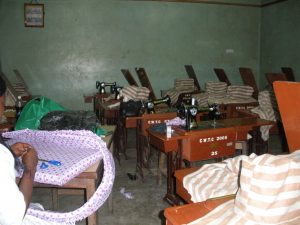 The sewing classroom
The sewing classroom
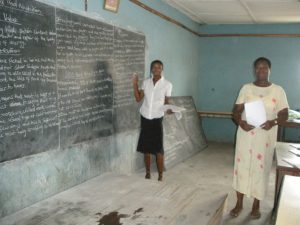 A nutrition lecture in progress
A nutrition lecture in progress
This facilty does not consider themselves needy or poor. Monthly they take up collections in the church for the less fortunate then they – note the St Vincent de Paul boxes out side the church.
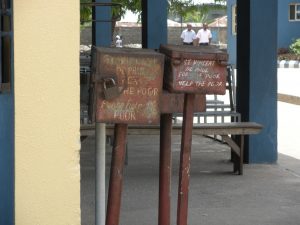
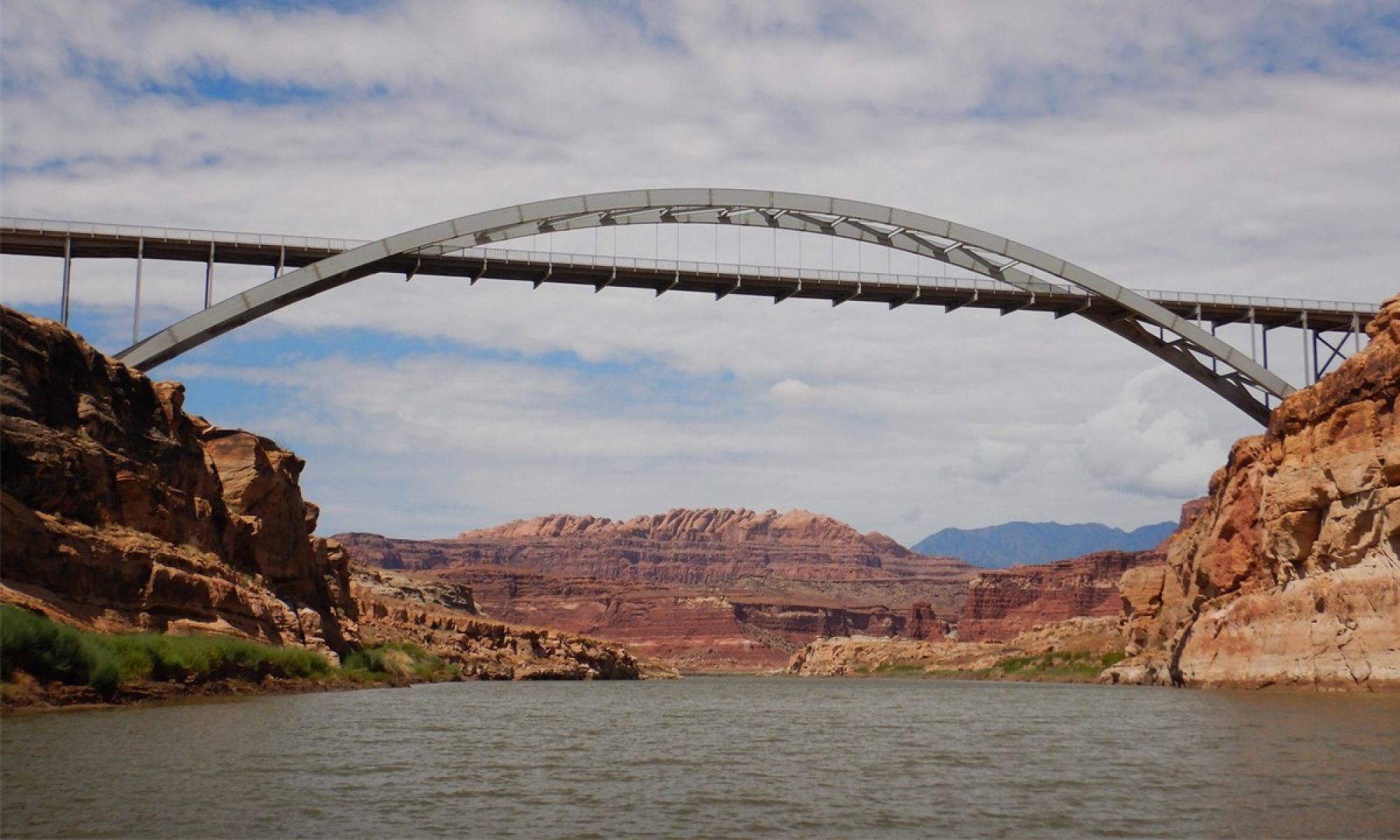
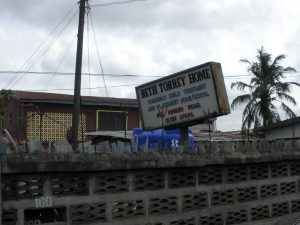
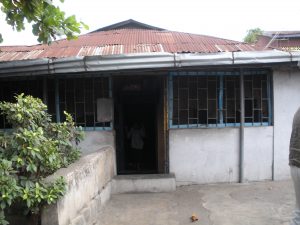
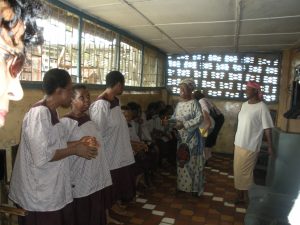
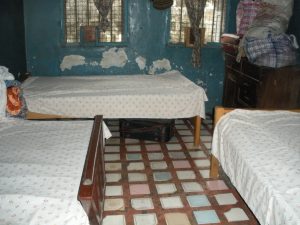 One of the bedrooms
One of the bedrooms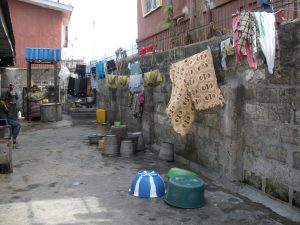 The outdoor kitchen & laundry
The outdoor kitchen & laundry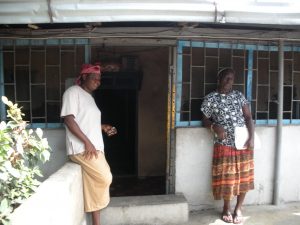 The head mistress Mrs. Opie and her assistant. One of them is in the home 24 hours a day caring for the children. Mrs. Opie has been here 27 years.
The head mistress Mrs. Opie and her assistant. One of them is in the home 24 hours a day caring for the children. Mrs. Opie has been here 27 years.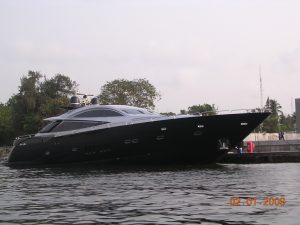
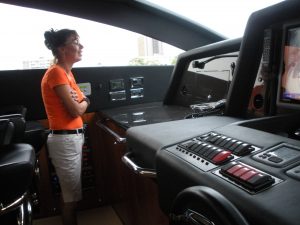
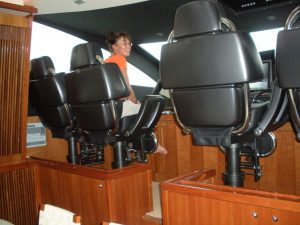
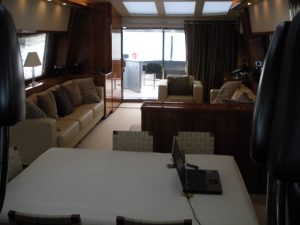
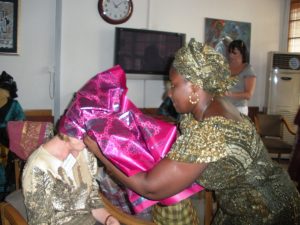
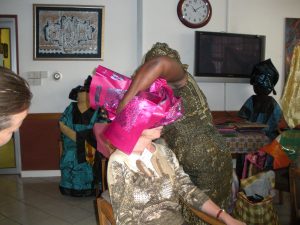
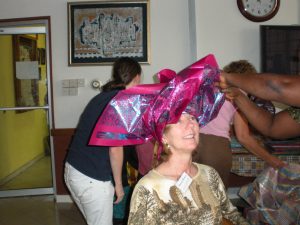
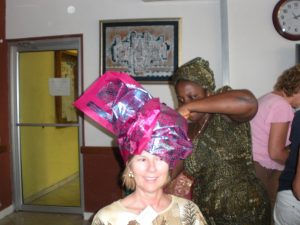
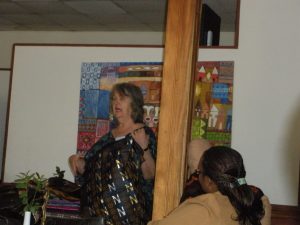
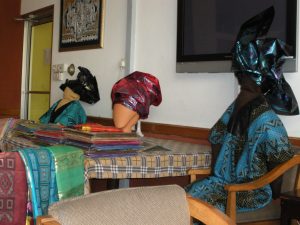
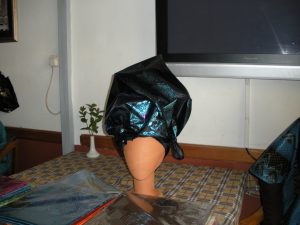
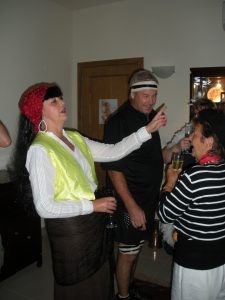 A Gypsy & Rugby Player
A Gypsy & Rugby Player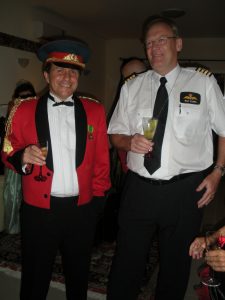 A General & a Pilot
A General & a Pilot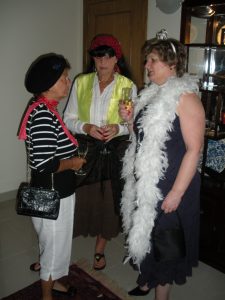 A French Boy, Gypsy & a Floozie
A French Boy, Gypsy & a Floozie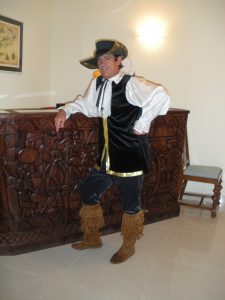 The famous pirate Guy
The famous pirate Guy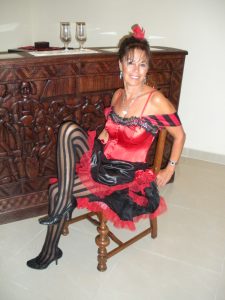 A Floozie
A Floozie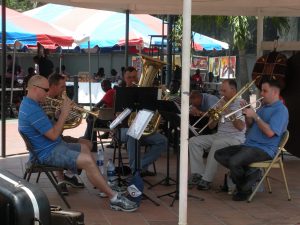
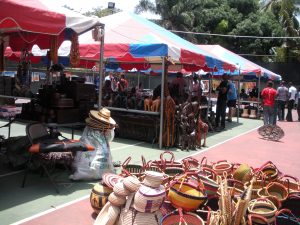
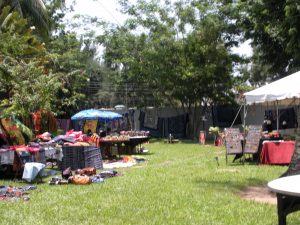
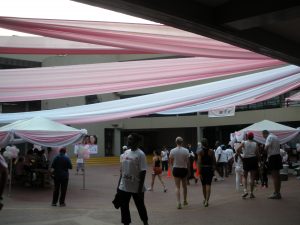 School courtyard awash in pink & white ribbons
School courtyard awash in pink & white ribbons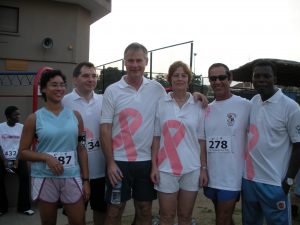 Rocky and Friends
Rocky and Friends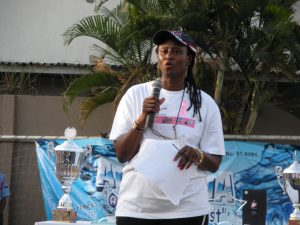 Ambassador Sandoers motivating the runners.
Ambassador Sandoers motivating the runners.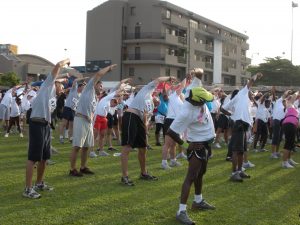 Warming up
Warming up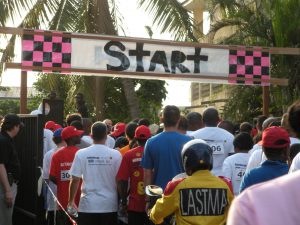
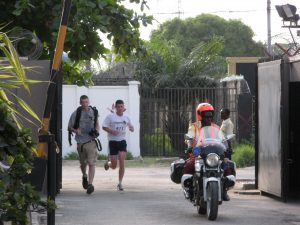 The Winner -a navy man!
The Winner -a navy man!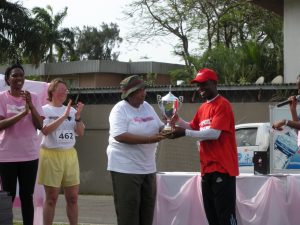 The ShopRite man took second place.
The ShopRite man took second place.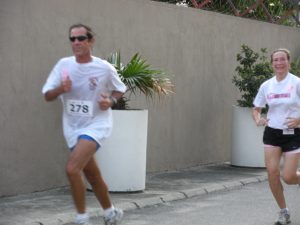 Here comes Rocky!
Here comes Rocky!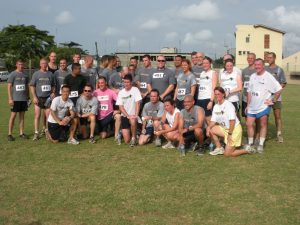 Navy and Marine participants
Navy and Marine participants